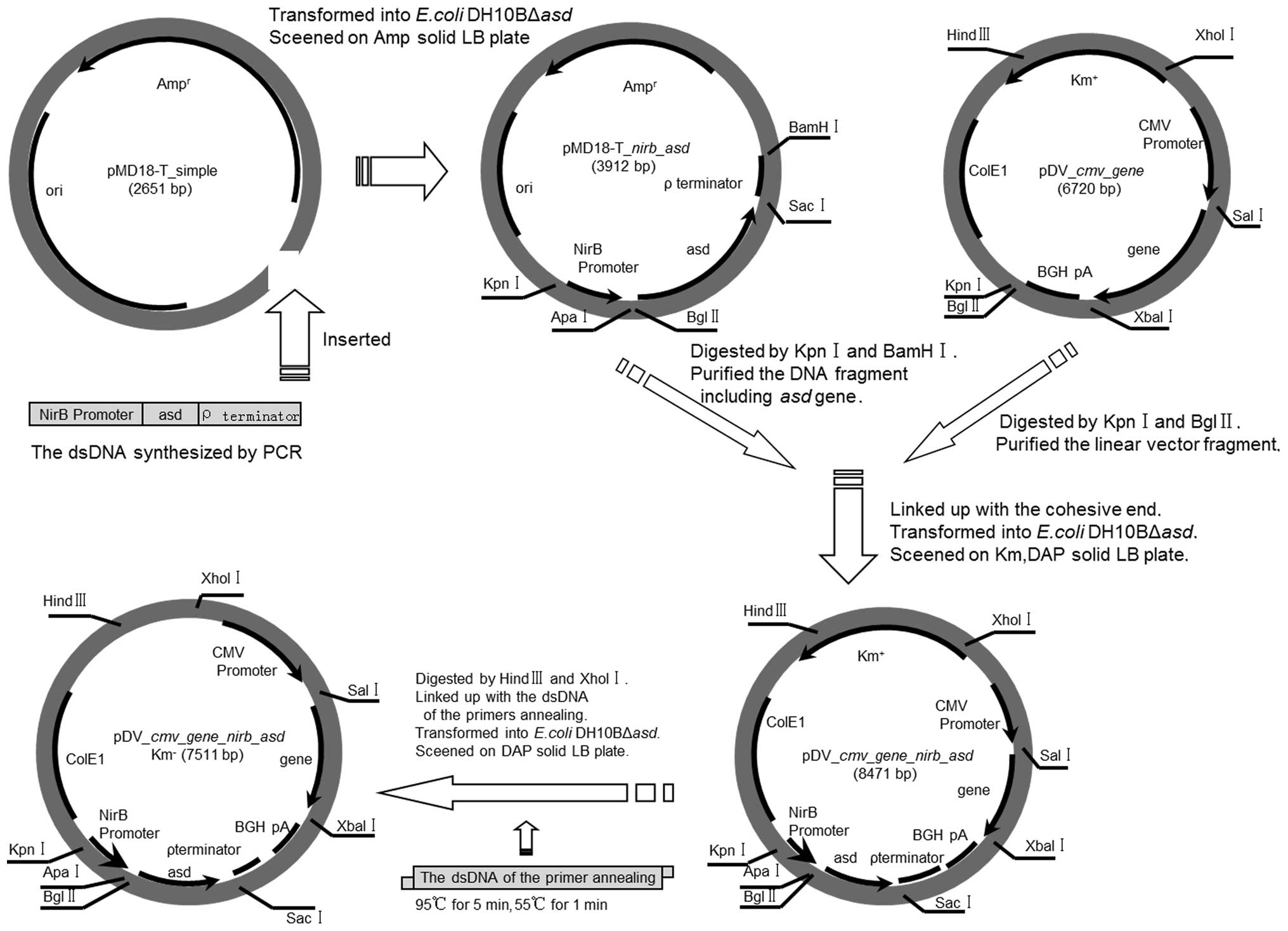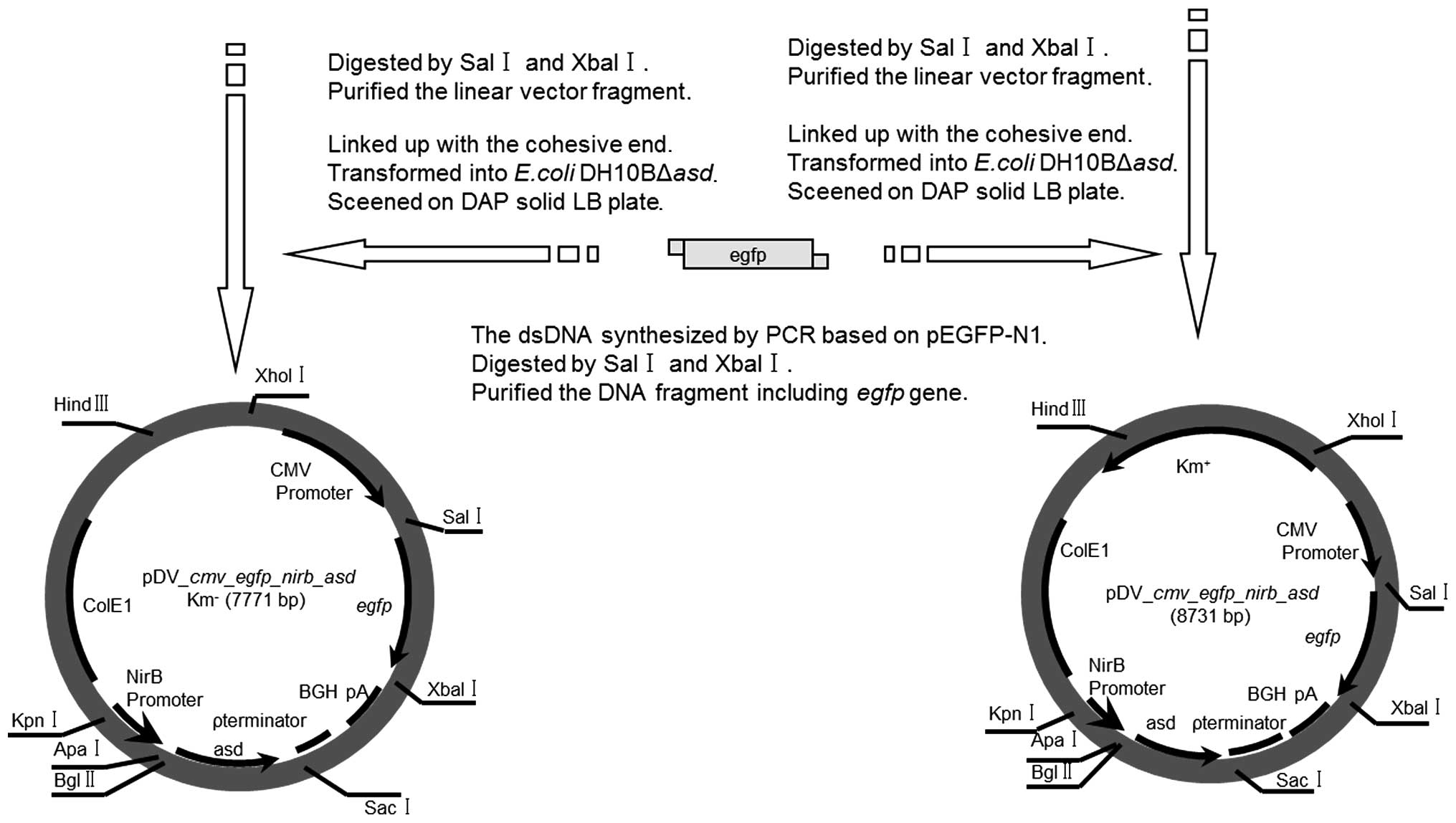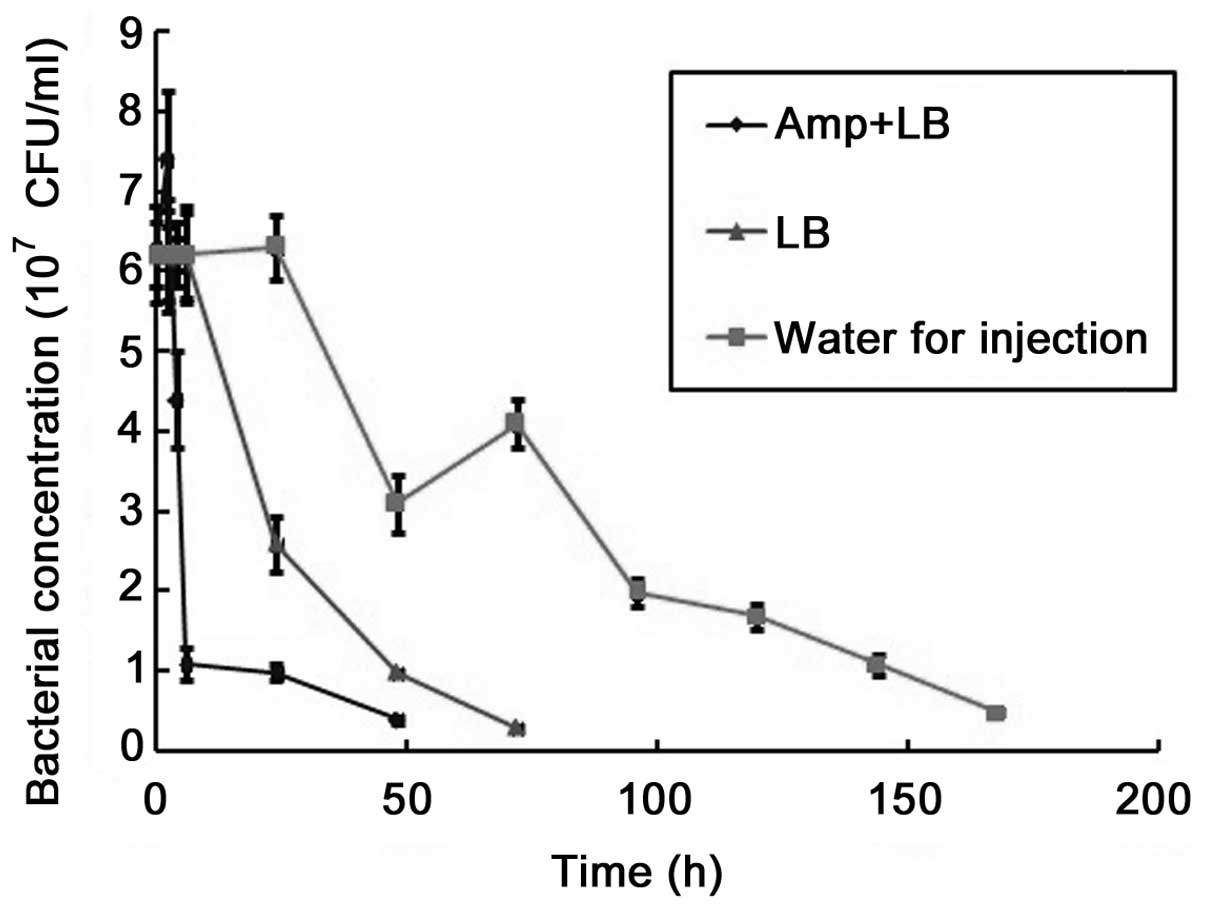|
1
|
Tolmachov OE: Building mosaics of
therapeutic plasmid gene vectors. Current gene therapy. 11:466–478.
2011. View Article : Google Scholar : PubMed/NCBI
|
|
2
|
Nahaei M, Valizadeh H, Baradaran B, et al:
Preparation and characterization of chitosan/beta-cyclodextrin
nanoparticles containing plasmid DNA encoding interleukin-12. Drug
research (Stuttg). 63:7–12. 2013. View Article : Google Scholar
|
|
3
|
Przybylowski M, Bartido S, Borquez-Ojeda
O, Sadelain M and Riviere I: Production of clinical-grade plasmid
DNA for human Phase I clinical trials and large animal clinical
studies. Vaccine. 25:5013–5024. 2007. View Article : Google Scholar : PubMed/NCBI
|
|
4
|
Norell H, Poschke I, Charo J, et al:
Vaccination with a plasmid DNA encoding HER-2/neu together with low
doses of GM-CSF and IL-2 in patients with metastatic breast
carcinoma: a pilot clinical trial. J Transl Med. 8:532010.
View Article : Google Scholar : PubMed/NCBI
|
|
5
|
Smith LR, Wloch MK, Ye M, et al: Phase 1
clinical trials of the safety and immunogenicity of adjuvanted
plasmid DNA vaccines encoding influenza A virus H5 hemagglutinin.
Vaccine. 28:2565–2572. 2010. View Article : Google Scholar : PubMed/NCBI
|
|
6
|
Oliveira PH and Mairhofer J: Marker-free
plasmids for biotechnological applications - implications and
perspectives. Trends Biotechnol. 31:539–547. 2013. View Article : Google Scholar : PubMed/NCBI
|
|
7
|
Pruden A, Pei R, Storteboom H and Carlson
KH: Antibiotic resistance genes as emerging contaminants: Studies
in northern Colorado. Environ Sci Technol. 40:7445–7450. 2006.
View Article : Google Scholar : PubMed/NCBI
|
|
8
|
7.0 EP: Gene transfer medical
products for human use. 648, 2011.
|
|
9
|
U.S. Food and Drug Administration:
Guidance for human somatic cell therapy and gene therapy. 1998.
|
|
10
|
Vandermeulen G, Marie C, Scherman D and
Préat V: New generation of plasmid backbones devoid of antibiotic
resistance marker for gene therapy trials. Mol Ther. 19:1942–1949.
2011. View Article : Google Scholar : PubMed/NCBI
|
|
11
|
Haziza C, Stragier P and Patte JC:
Nucleotide sequence of the asd gene of Escherichia coli: Absence of
a typical attenuation signal. EMBO J. 1:379–384. 1982.PubMed/NCBI
|
|
12
|
Narayanan K and Warburton PE: DNA
modification and functional delivery into human cells using
Escherichia coli DH10B. Nucleic Acids Res. 31:e512003. View Article : Google Scholar : PubMed/NCBI
|
|
13
|
Datsenko KA and Wanner BL: One-step
inactivation of chromosomal genes in Escherichia coli K-12 using
PCR products. Proc Natl Acad Sci USA. 97:6640–6645. 2000.
View Article : Google Scholar : PubMed/NCBI
|
|
14
|
Curtiss R III, Galan JE, Nakayama K and
Kelly SM: Stabilization of recombinant avirulent vaccine strains in
vivo. Res Microbiol. 141:797–805. 1990. View Article : Google Scholar : PubMed/NCBI
|
|
15
|
Dong WR, Xiang LX and Shao JZ: Novel
antibiotic-free plasmid selection system based on complementation
of host auxotrophy in the NAD de novo synthesis pathway. Appl
Environ Microbiol. 76:2295–2303. 2010. View Article : Google Scholar : PubMed/NCBI
|
|
16
|
Durfee T, Nelson R, Baldwin S, et al: The
complete genome sequence of Escherichia coli DH10B: Insights into
the biology of a laboratory workhorse. J Bacteriol. 190:2597–2606.
2008. View Article : Google Scholar : PubMed/NCBI
|
|
17
|
Grant SG, Jessee J, Bloom FR and Hanahan
D: Differential plasmid rescue from transgenic mouse DNAs into
Escherichia coli methylation-restriction mutants. Proc Natl Acad
Sci USA. 87:4645–4649. 1990. View Article : Google Scholar : PubMed/NCBI
|
|
18
|
Galán JE, Nakayama K and Curtiss R III:
Cloning and characterization of the asd gene of Salmonella
typhimurium: Use in stable maintenance of recombinant plasmids in
Salmonella vaccine strains. Gene. 94:29–35. 1990. View Article : Google Scholar : PubMed/NCBI
|
|
19
|
Zhao Z, Wang C, Xue Y, et al:
Immunogenicity and protective efficacy of pertactin recombinants
against Bordetella bronchiseptica challenge. Wei Sheng Wu Xue Bao.
50:1239–1245. 2010.In Chinese. PubMed/NCBI
|
|
20
|
Arias-Lopez C, Lazaro-Trueba I, Kerr P, et
al: p53 modulates homologous recombination by transcriptional
regulation of the RAD51 gene. EMBO Rep. 7:219–224. 2006. View Article : Google Scholar
|
|
21
|
Makoff AJ and Oxer MD: High level
heterologous expression in E. coli using mutant forms of the lac
promoter. Nucleic Acids Res. 19:2417–2421. 1991. View Article : Google Scholar : PubMed/NCBI
|
|
22
|
Teeter KC, Thibodeau LM, Gompert Z,
Buerkle CA, Nachman MW and Tucker PK: The variable genomic
architecture of isolation between hybridizing species of house
mice. Evolution. 64:472–485. 2010. View Article : Google Scholar
|
|
23
|
Kobayashi F, Yamaguchi M and Mitsuhashi S:
Drug resistance to aminoglycosidic antibiotics in Pseudomonas
aeruginosa and its lability. Jpn J Microbiol. 16:425–431. 1972.
View Article : Google Scholar : PubMed/NCBI
|
|
24
|
Yagisawa M, Yamamoto H, Naganawa H, Kondo
S and Takeuchi T: A new enzyme in Escherichia coli carrying
R-factor phosphorylating 3′-hydroxyl of butirosin A, kanamycin,
neamine and ribostamycin. J Antibiot (Tokyo). 25:748–750. 1972.
View Article : Google Scholar
|
|
25
|
Wang H and Gunsalus RP: The nrfA and nirB
nitrite reductase operons in Escherichia coli are expressed
differently in response to nitrate than to nitrite. J Bacteriol.
182:5813–5822. 2000. View Article : Google Scholar : PubMed/NCBI
|
|
26
|
Bowers LM, Lapoint K, Anthony L,
Pluciennik A and Filutowicz M: Bacterial expression system with
tightly regulated gene expression and plasmid copy number. Gene.
340:11–18. 2004. View Article : Google Scholar : PubMed/NCBI
|
|
27
|
Wu YC and Liu ST: A sequence that affects
the copy number and stability of pSW200 and ColE1. J Bacteriol.
192:3654–3660. 2010. View Article : Google Scholar : PubMed/NCBI
|
















